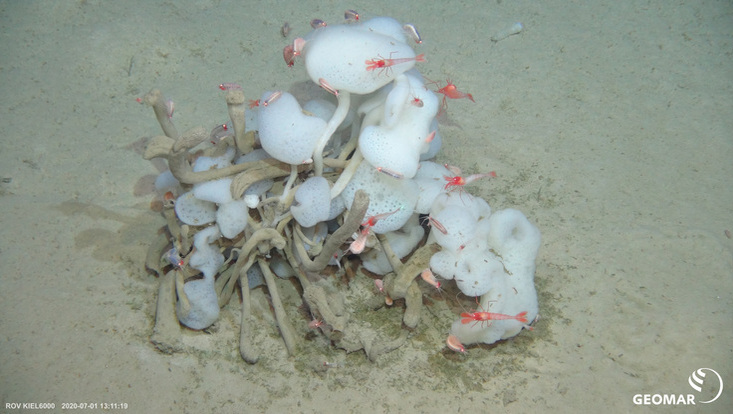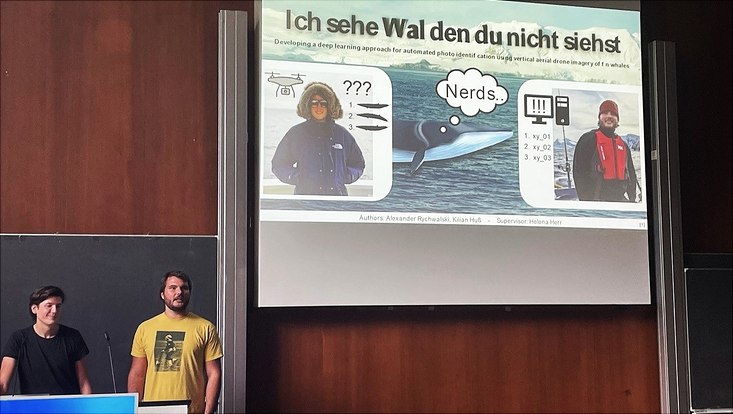New species discovered in the deep sea
6 May 2024, by Miriam Frieß

Photo: GEOMAR / Senckenberg
Though it constitutes a major portion of the oceans, the deep sea remains largely unexplored. At a depth of more than 3,000 meters, Dr. Anne-Nina Lörz and her team discovered a new species on the ocean floor near Iceland.
The tiny amphipod, measuring ca. 4 cm long, is officially called Halirages spongiae. Lörz and her team named it after the sponges they discovered it on. Using a remotely operated underwater vehicle that transmitted its camera footage back on board in real-time, the team successfully filmed the tiny crustaceans and subsequently collected specimens. Universität Hamburg, the University of Bergen, the Natural History Museum Vienna, and the German Centre for Marine Biodiversity Research participated in the expedition.
“For the most part, the floor of the deep sea is consistently grayish-brown, and for long expanses there’s very little to see – and then, all of sudden, we spied the white sponges with vivid red amphipods crawling on them,” recalls Lörz, a marine biologist. After retrieving some specimens, the researchers were able to record the species’ physical characteristics on board. After returning to dry land, they conducted a genetic analysis in the lab to precisely classify the species. That’s when it became clear: what they had found was an entirely new species. “When you look at both the morphological traits and genetic structure to classify a species, it’s called integrative taxonomy,” Lörz explains. “This approach allowed us to determine exactly where the newly discovered species fits in the tree of life.”
Because the deep sea is largely unexplored, new species are discovered comparatively frequently, e.g. by being identified in videos or photos, or in fishing nets. But in many cases, the resources needed for closer investigation are lacking. According to Lörz: “We had the chance to observe them in their natural habitat. We could see how they moved and the communities they lived in. At the same time, we succeeded in bringing specimens up to the surface and examining them. That combination is something you don’t see every day.” The same combination is what allowed the team to put together the pieces of the puzzle and determine how the amphipod Halirages spongiae fits into the biotic community of the ocean floor at a depth of 3,000 meters.
Publication
Lörz AN, Nack M, Tandberg AHS, Brix S, Schwentner M (2024): A new deep-sea species of Halirages Boeck, 1871 (Crustacea: Amphipoda: Calliopiidae) inhabiting sponges; European Journal of Taxonomy; DOI: 10.5852/ejt.2024.930.2487
Contact:
Dr. Anne-Nina Lörz
Center for Earth System Research and Sustainability
Universität Hamburg
+49-40-42838-9891
anne-nina.loerz"AT"uni-hamburg.de


